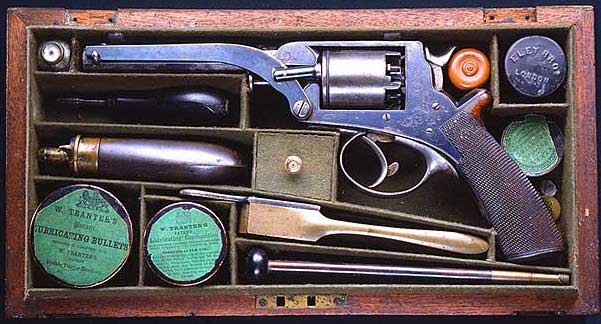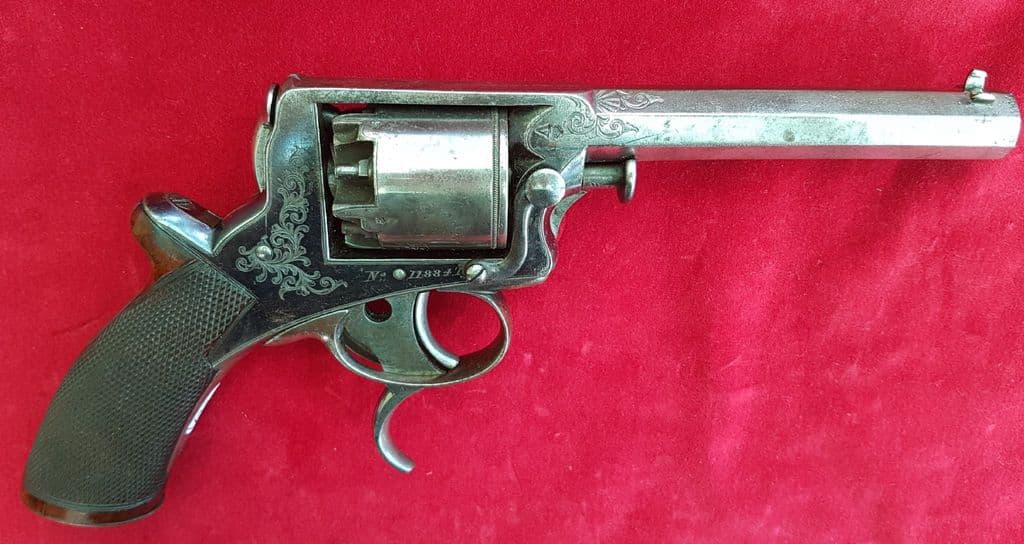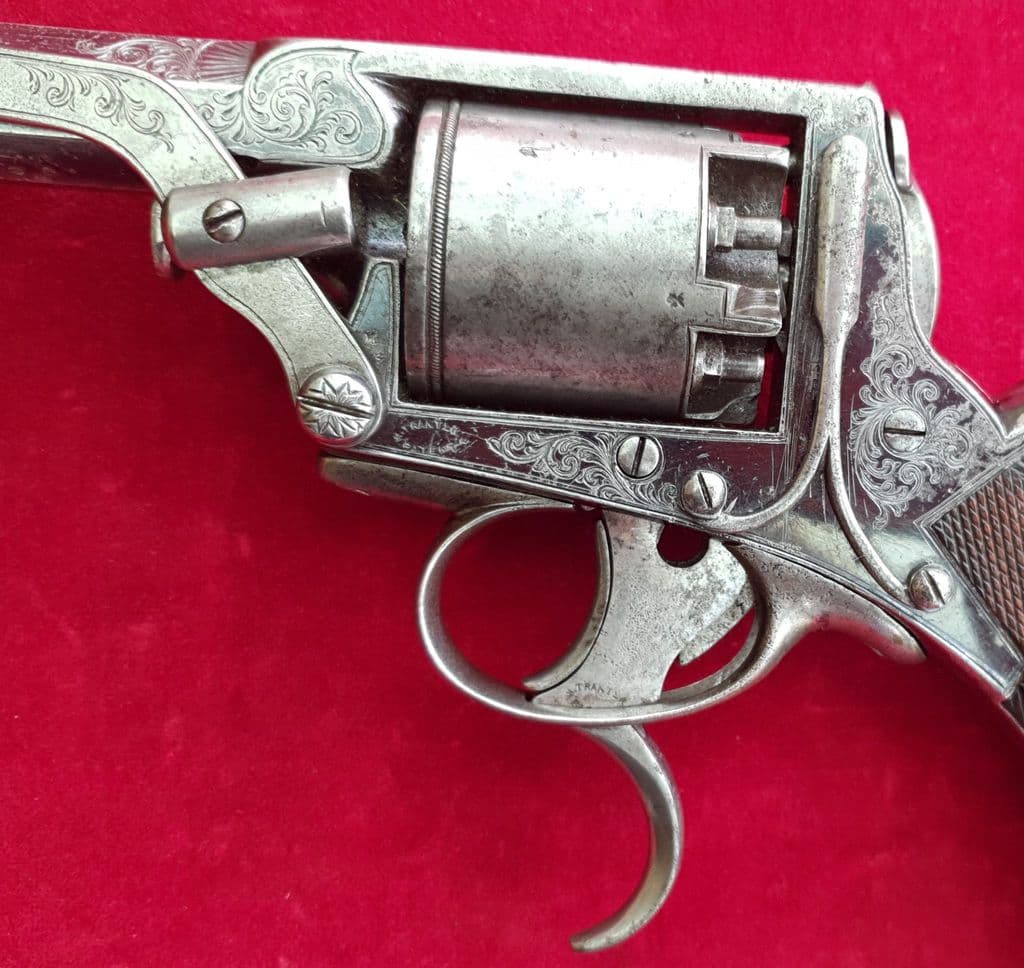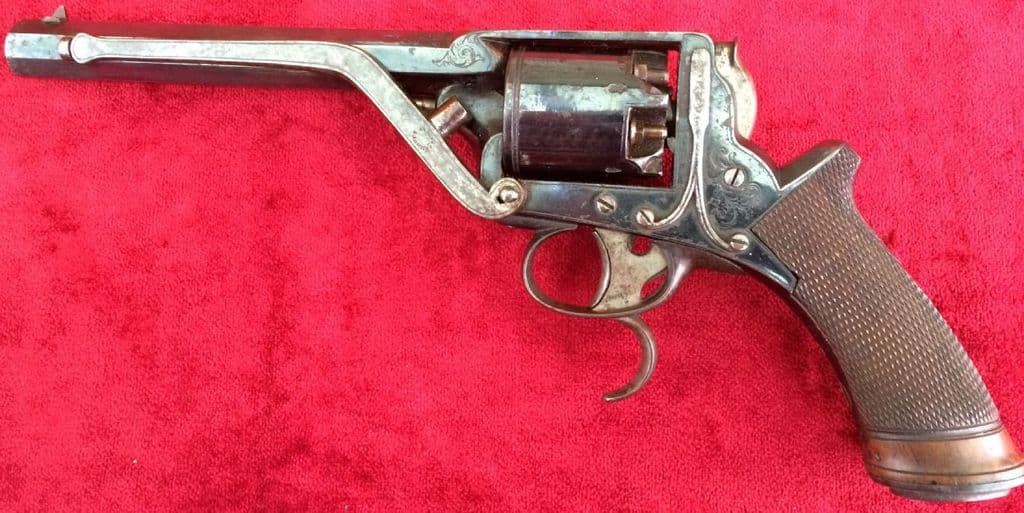What do Jeb Stuart and Sherlock Holmes have in common?
They both favored the Tranter. A popular double action revolver designed by William Tranter and Robert Adams (of the Beaumont-Adams) in 1853, the Tranter was used in both the American Civil War and the Anglo-Zulu war, as well as by various famous figures throughout world and literary history. They were used by an early version of the Mounties (NWMP), the Confederacy, the British Army, notable Australian bushranger Ben Hall, and Sir Arthur Conan Doyle’s Sherlock Holmes.

A Tranter Gifted from Major Heros Von Borke to Jeb Stuart. Image Source: Wikimedia Commons
The Tranter came in two distinct versions: a double trigger and a single trigger version. The double trigger version cocked the hammer by pulling the lower exposed trigger and fired by pulling the trigger within the trigger guard. However, one could fire double action style by pulling both triggers at once. The single trigger version (produced from 1856-1863) worked much like the Beaumont-Adams double action trigger, the mechanism being nearly identical. The trigger cocked the hammer and revolved the cylinder, while a spur on the back of the trigger released the hammer. In fact, Tranter’s frames were made under license from Adams until 1865. Tranter, having manufacturing capacity, had a contract to make frames for Adams and could continue making those frames without license after the patent expired in 1865. Double and single trigger Tranters can be found with both spurred and spurless hammers.

Engraved Tranter. Image Source: Andrew Bottomley Auctions

Single Trigger Tranter. Image Source: Wikimedia Commons
Early Safety Measures
Tranters were known for an important safety feature for percussion cap revolvers: an early style of hammer block. One would slightly raise the hammer by pressing slightly on the lower trigger. The upside-down Y-shaped spring on the left-hand side of the Tranter would then press a stud that would block the hammer from contacting the nipples. When the hammer moved back to full cock, the stud would be raced back into the frame, allowing the revolver to fire when the sear was disengaged by the main trigger.

Note the upside-down Y-shaped hammer block spring. Image Source: Andrew Bottomley Auctions

Image Source: Andrew Bottomley Auctions
Variations
The percussion cap double trigger revolvers had three iterations, differentiated by the type of rammer they were equipped with. The First Model dates from 1853. They had a detachable rammer that attached onto a peg in the frame of the revolver. The Second Model, introduced in 1855, had a rammer that was more permanently mounted to the frame, yet still was removable. The third model, also from 1855, had a rammer permanently attached by a screw. Later cartridge Tranters were also made in various rimfire and centerfire calibers through 1880.

Double trigger Tranter. Image Source: Andrew Bottomley Auctions

Rimfire Tranter. Image Source: Andrew Bottomley Auctions
All told, the Tranter was a very successful double action revolver of the mid to late 1800s and a serious competitor for a robust military and police focused revolver which saw combat service all over the world. If you have one in your collection, you are very lucky indeed. Good condition Tranters go for several thousand dollars nowadays.
 Your Privacy Choices
Your Privacy Choices
